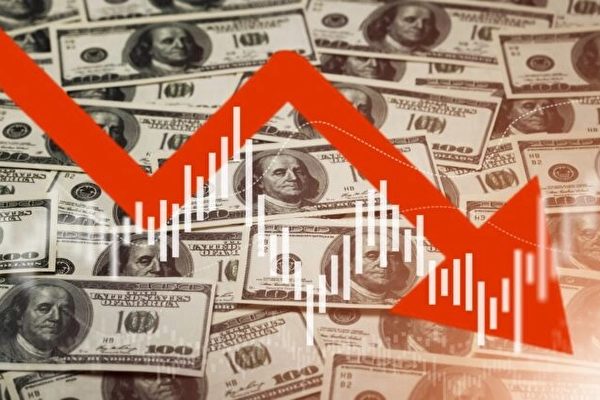When the 10-year and 3-month U.S. Treasury bond yields invert, an economic recession is sure to follow. However, despite the yield spread remaining negative for a record 18 months, the longest ever in history, the economy has not entered a recession. What exactly is happening?
Many have asserted that the current situation is different, suggesting that shifts in the economic structure mean that interest rates are no longer as critical. For example, venture capitalist and Wall Street Journal columnist Andy Kessler summed it up in a recent article, stating, “Higher rates may affect our economy, but the impact is diminishing.”
However, we need not solely rely on changes in the economic structure to explain why the economy has been able to sustain growth for two years without recession despite negative interest spreads and the Federal Reserve raising rates 11 times. The more likely reason for this apparent anomaly is the old-style Keynesian fiscal stimulus, namely historic levels of federal deficits.
From 1947 to 2019, the national deficit – federal spending minus federal income – averaged 2% of GDP. However, in response to the economic downturn caused by the COVID-19 pandemic in 2020, the federal deficit as a percentage of GDP soared to a remarkable double-digit figure of 14.7%, followed by 11.8% in the subsequent year. The highest single-year deficit since 1953 was 9.8% during the Great Recession in 2009.
While some may argue that these deficits were necessary to provide the aggressive fiscal stimulus required to combat the recession triggered by the pandemic, the situation in 2022 and 2023 was different. The challenge was not a recession but inflation, which did not call for fiscal stimulus but rather fiscal restraint. Yet, the federal deficit reached $1.4 trillion in 2022 and $1.7 trillion in 2023, accounting for 5.3% and 6.2% of GDP, respectively.
Considering the impact of deficits, in 2022, nominal GDP grew by 9.1%, but after adjusting for inflation, real GDP only increased by 2%. Yet, the deficit as a percentage of GDP was 5.3%, surpassing the average deficit of 2% between 1947 and 2019. This means that the additional fiscal stimulus exceeded the standard by 3.3%, providing an extra 3.3% boost to the economy even without considering any multiplier effects. This looming economic overheating sounds like a recession.
The situation in 2023 mirrored this trend. Despite nominal GDP growth of 6.3%, real GDP growth was only 2.5%. Yet, the deficit reached 6.2%, indicating an extraordinary stimulus of 4.2%. Without this additional economic boost, real GDP would have decreased by 1.7%.
These data suggest that the negative effects typically brought by high interest rates have been offset by historically high levels of federal deficits. While the short-term stimulative effects of these deficits may be beneficial for Joe Biden’s second presidential term, in the long term, they will lead to stagflation and higher debt burdens. Keynes might say, “In the long run, we are all dead,” but in the current scenario, the long run is not so distant. In 2024, the economy has already begun experiencing the withdrawal effects of excess stimulation.
Despite this year’s fiscal deficit potentially reaching $2 trillion, the initial annualized quarter-over-quarter real GDP growth for the first quarter was a mere 1.6%, the weakest since 2022. Despite efforts by the Federal Reserve, inflation continues to accelerate. As a result, the Fed delays reducing the federal funds rate, funding the expanding deficit with massive new government debt issuance. Consequently, long-term rates rise again, pushing mortgage rates above 7% and plunging the housing market into a recession. Higher long-term rates increase the cost of commercial real estate debt, putting the balance sheets of many mid-sized banks at risk.
Most concerning is that the massive deficits come at the expense of private investment. Perhaps this explains why the growth rate of business investments in the first quarter was only 2.1%, and private equipment investment has declined for four consecutive quarters over the past two years.
Therefore, although fiscal stimulus has masked the forces that would lead to an economic recession, this mask seems to be slipping. This may explain why despite constant reports of a robust economy, people’s sentiments are somewhat negative.

